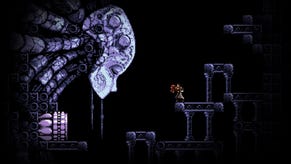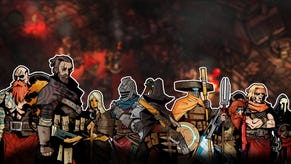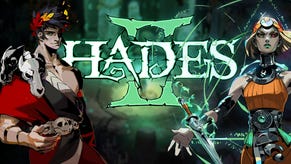"We're not trying to create a game for everyone." PostMod's Blaine Bowen Talks Sightseeing in The Old City: Leviathan
If you enjoy storytelling by means of exploration, there's lots to love about this upcoming tour of the post apocalypse.
This article first appeared on USgamer, a partner publication of VG247. Some content, such as this article, has been migrated to VG247 for posterity after USgamer's closure - but it has not been edited or further vetted by the VG247 team.
I love environmental narrative games. Call them "walking simulators" if you must, but so few other experiences manage to tap into the part of my brain that loves solving mysteries. It's rare to find yourself dropped into an environment, and left to your own devices for the sake of answering a single question: "Just what the hell happened here?"
Unfortunately, in my time with the preview build of PostMod's The Old City: Leviathan, I didn't come close to figuring out an answer to that timeless question, but their creation hooked me regardless. Simply put, it has everything I want to see in this kind of an experience: surprises around every corner, long stretches of contemplative dread, and a series of narrative breadcrumbs to help you piece together the logistics of its atmospheric environment.

Since games of this genre typically present a world without other people, The Old City: Leviathan's post-apocalyptic setting makes perfect sense. Though the chapters I played give no hint as to who, when, or where, the notes and clues scattered about reveal some very basic facts: The Old City's past featured various groups vying for power, safety, and survival, with the conclusion to this conflict being about what you'd expect: a world that, on the surface, at least, appears to be free of living humans.
The Old City presents a mystery with no easy answers, and one that doesn't offer the expected tropes of a post-apocalyptic setting. According to PostMod's Blaine Bowen, that's entirely intentional. "We wanted to avoid making the game about the post-apocalypse, so we never ever explain how it happens. It's just there. And everybody just refers to it as 'the fall.' There's never any explanation for it, because frankly, it's kind of irrelevant. I don't think, in that setting, people would always be talking about [it]. Whereas most games tend to make the game definitely about that—and I don't want to make the game about the post-apocalypse. That's just the setting that was necessary to create the conflict, basically," says Bowen.
For Bowen, the choice to tell The Old City's story through environmental narrative rather than a more traditional format didn't come immediately. At first, the game featured puzzles to break up the wandering, but PostMod eventually decided for The Old City to focus on exploration above all else. As it stands, the only items you can interact with in the game are doors, and hidden boxes that gradually unlock chunks of a novella-length story. According to Bowen, "We only put interaction where it helps you progress."
During our conversation, he went into further detail about how the lack of interactivity in The Old City connects with his desire to tell a story above any other goal:
"A good example of why [we chose this format] is to look at something like Amnesia: The Dark Descent. I love that game—it was an amazing game—it's beautiful, I like the story, the horror aspects were amazing... But, every once in a while, you had these puzzles that, for me, they basically completely detracted from everything else. You weren't really experiencing horror while doing the puzzles—especially the very mechanical puzzles—and it just wasn't really part of the rest of it. We didn't want to shoehorn gameplay into [The Old City] just to fill a quota. The game is about story, so why not just make a story?
"We wanted to make it very, very dependent on your ability to explore. So, the more you explore the environment, the more you'll understand. So if you don't explore at all, you're not going to understand anything. You just have to find as much as you can and connect the dots—so you're basically doing detective work."
Of course, gaming experiences like The Old City are still pretty atypical—check out last year's seemingly endless Internet wars over the supposed "gameyness" of Gone Home and you'll see what I mean. But while Bowen and his team recognize the stigma of their chosen genre, they believe it has a lot of potential—if only we could figure out what to call it.

"I think [the future of this genre] will be dependent on how people take it," says Bowen. "There's a stigma around it, but I think it's getting better. I think people's problem with it was the fairly obvious one: they just didn't see it as a game. If you have a rigid definition of what 'game' is, that's perfectly fine. I can't really fault you for that. But whatever it is, the term 'game' is undeniably connotative now. It's not denotative. If you feel like it's important to maintain a strict definition, that's perfectly fine, but then, there needs to be a new name for what [The Old City] is."
















